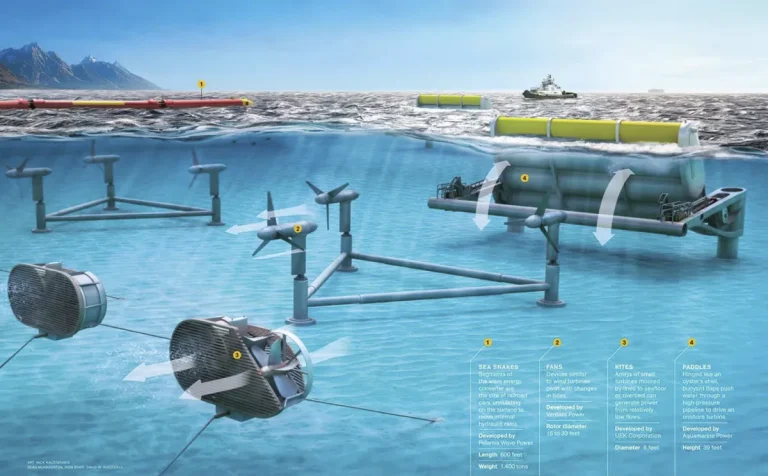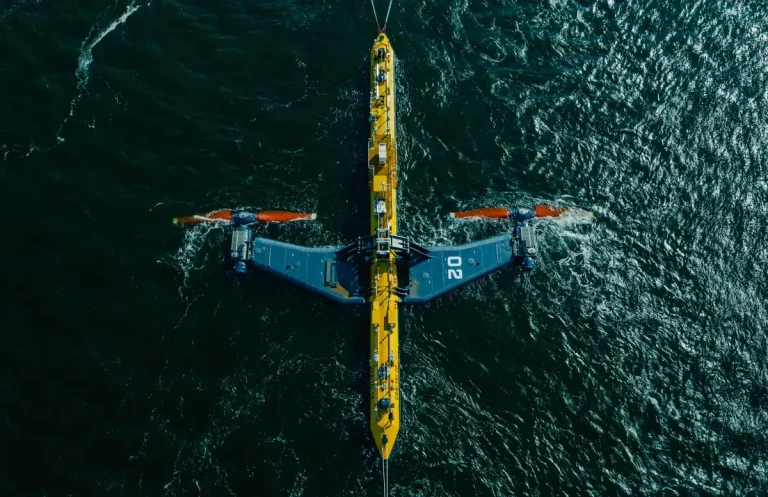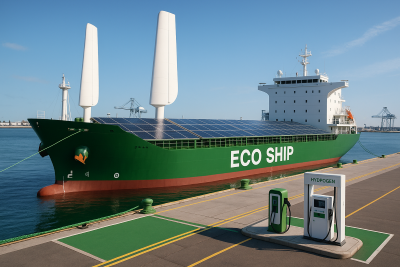The Wave Energy Future: Possibilities and Obstacles
As the global community swiftly transitions to clean, renewable energy alternatives, wave energy is emerging as a sustainable resource in near future which was, largely overlooked in past. While solar and wind energy have captured the spotlight and investment dollars, the rhythmic force of the ocean may provide the answer to fulfilling worldwide energy needs particularly for nations situated along coastlines. But how far along are we in realizing the complete potential of wave energy? In this piece, we delve into the workings of wave power, examine its vast possibilities, and confront the hurdles preventing it from becoming mainstream.
🌐 What Is Wave Energy?
Wave energy refers to the technique of harnessing the energy generated by ocean surface waves and transforming it into electricity. In contrast to tidal energy, which depends on the moon’s gravitational forces, wave energy is produced by the wind interacting with the ocean’s surface. There are multiple types of wave energy technologies:
- Point absorbers – floating devices that move up and down with the waves
- Oscillating water columns (OWCs) – chambers that compress air as water rises and falls inside them
- Attenuators – long, segmented structures that bend with the waves These technologies vary in design and effectiveness but share a common aim: sustainable electricity generation.
🌍 Why Wave Energy Holds Great Promise
Oceans encompass over 70% of our planet and are in continuous motion. The International Energy Agency (IEA) states that the theoretical potential for wave energy worldwide exceeds 29,500 TWh/year—surpassing the total global electricity consumption.
Key benefits:
- Predictability: Waves are more reliable than solar and wind, particularly during winter months
- Proximity to population centers: Numerous major cities are located near coastlines
- Minimal land use: There is no requirement for extensive land or rooftop space Wave energy could revolutionize energy access for island nations, isolated coastal areas, and countries aiming to broaden their renewable energy portfolio.
🚀 Significant Opportunities
1.Technological Advancement
Startups and research institutions are developing materials that resist corrosion, adaptive mooring systems, and AI-driven monitoring all of which lower costs and enhance efficiency.
2. Hybrid Systems
In future the Wave energy installations can be combined with offshore wind or floating solar systems, optimizing ocean space and sharing resources like transmission lines and maintenance teams.
3. Employment Generation
Wave energy initiatives create long-lasting job opportunities—from engineering and construction to logistics and upkeep—especially in coastal regions.
4. Emission-Free Energy
Wave power produces no direct emissions, aiding countries in achieving Net Zero targets and enhancing energy security.
⚠️ **Significant Obstacles May Rise in Future**
Although wave energy holds great promise, it remains in its early stages compared to other renewable sources. Major challenges include:
- High Initial Costs: The expenses associated with deployment, prototyping, and testing are considerable
- Challenging Conditions: Ocean-based devices must withstand corrosion, severe weather, and marine growth
- Ecological Concerns: The effects on marine habitats require further investigation
- Energy Storage & Grid Connection: Wave patterns do not always correspond with periods of high demand
- Regulatory Challenges: Permitting, marine zoning, and a lack of uniform standards hinder progress
🌎 **Global Examples Making an Impact**
Numerous initiatives around the globe are demonstrating that wave energy is more than just a theory ,nevertheless it is becoming a reality:
- 🇫🇮 AW-Energy’s Wave Roller – A shore-based oscillating water column technology in Finland connected to the electricity grid
- 🇦🇺 Carnegie Clean Energy – Innovative submerged CETO buoys operating off the coast of Western Australia
- 🇬🇧 EMEC (European Marine Energy Centre) – The foremost marine energy testing facility in Orkney, Scotland These trailblazers are establishing the groundwork for commercial utilization and integration into the grid.
🔮 **What Lies in Future ?**
Analysts predict robust growth for the wave energy industry, with worldwide investments expected to surpass $10 billion by 2030.
Key trends emerging include:
- Modular and scalable designs
- AI-driven real-time energy forecasting
- Collaborations with offshore wind and green hydrogen initiatives international collaboration, government funding, and private research and development will all contribute to the expansion of this vital technology.
✅ **Final Thoughts**
Wave energy has evolved from a mere concept into a rapidly progressing sector within renewable energy. With adequate backing, innovative technology, and clear vision, the oceans could become one of the most reliable and powerful energy sources on our planet. Now is the time to invest in wave energy. By fostering innovation and minimizing regulatory hurdles, we can ride the wave towards a more sustainable and resilient energy future



